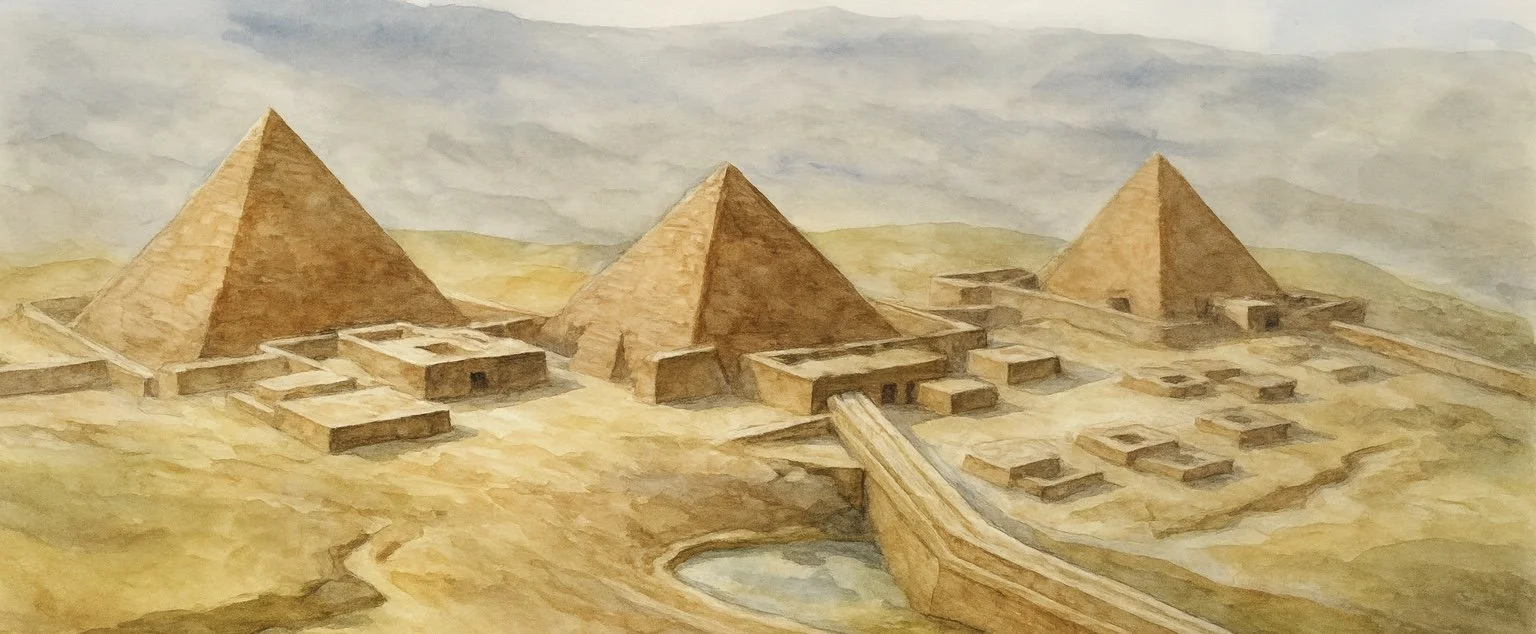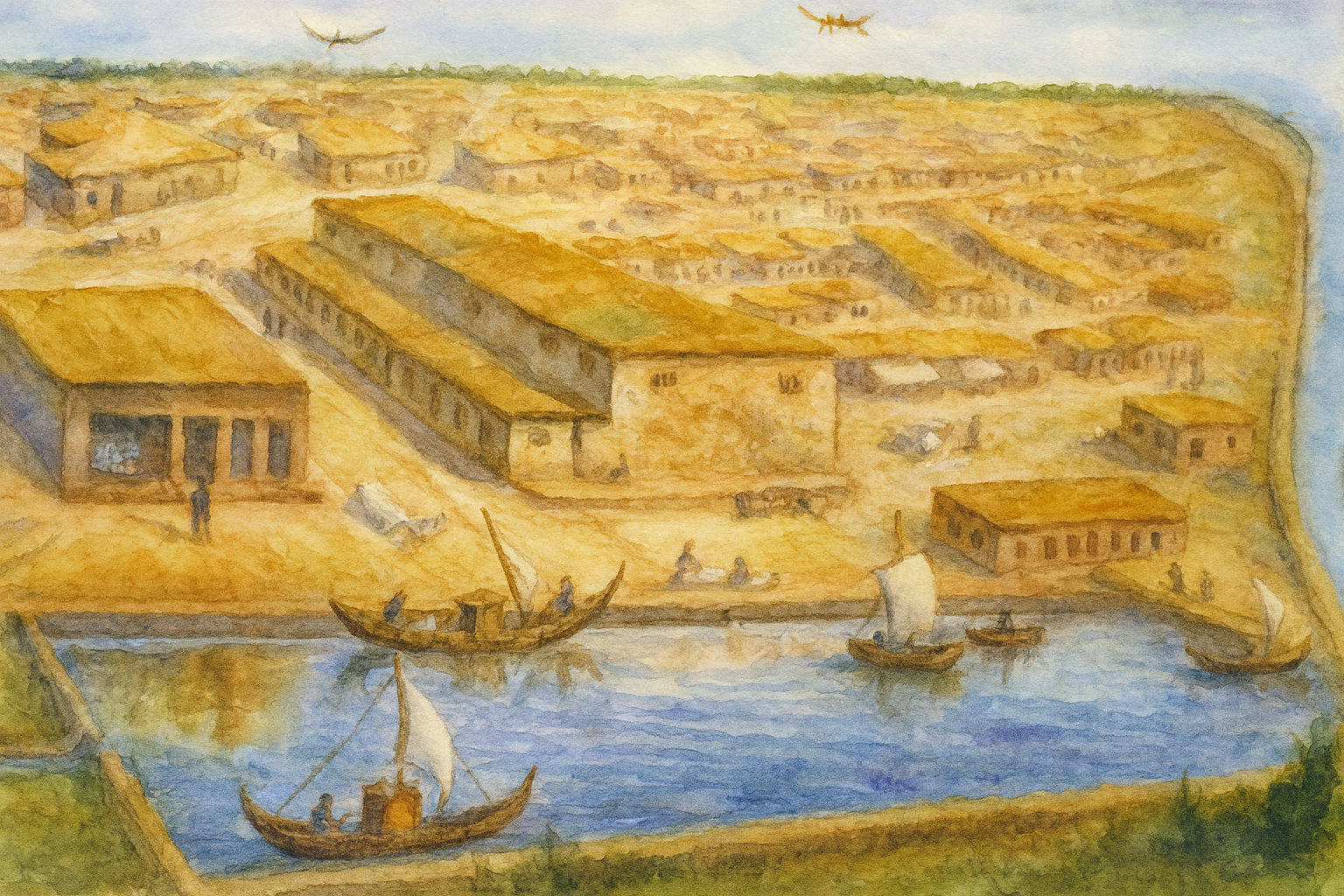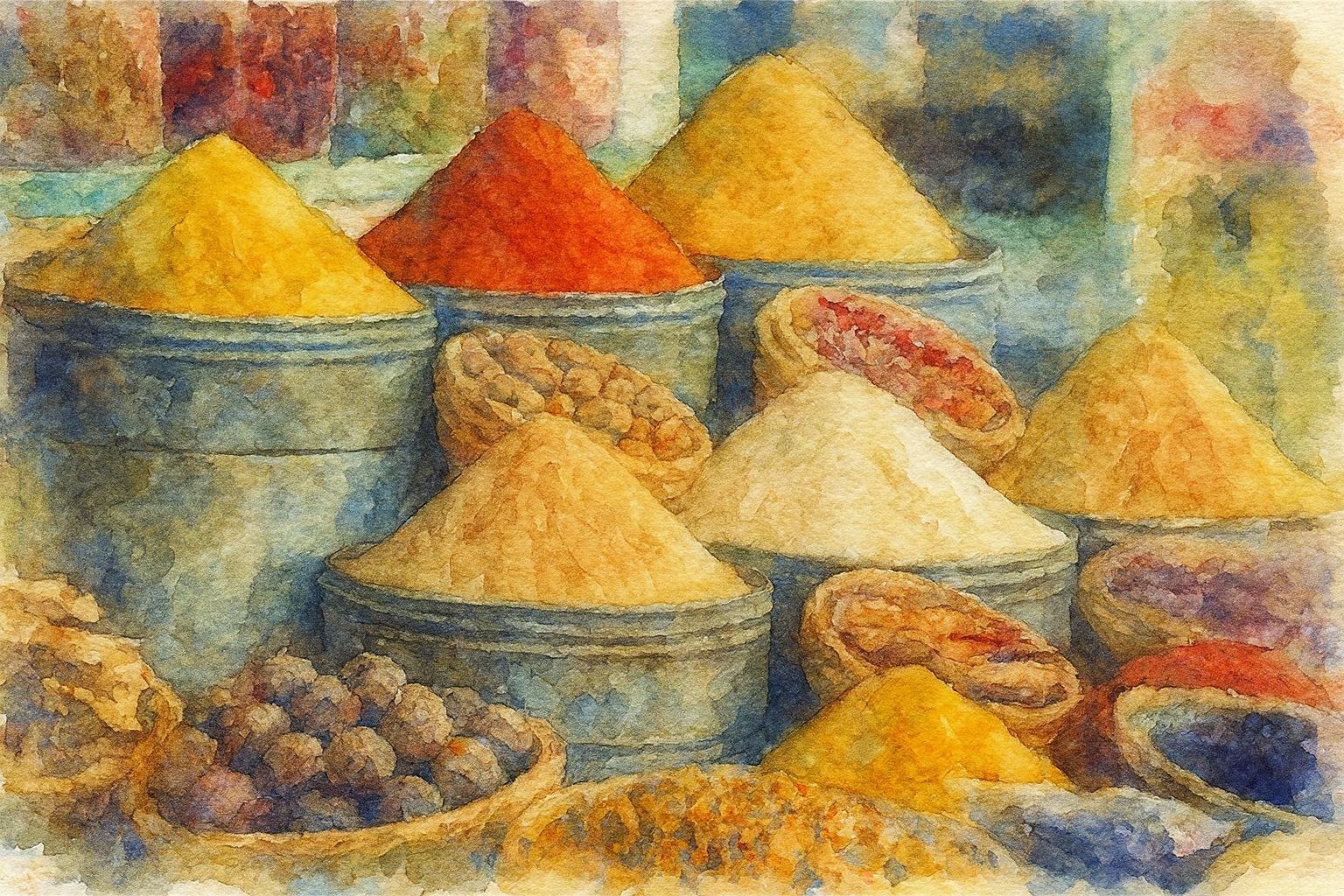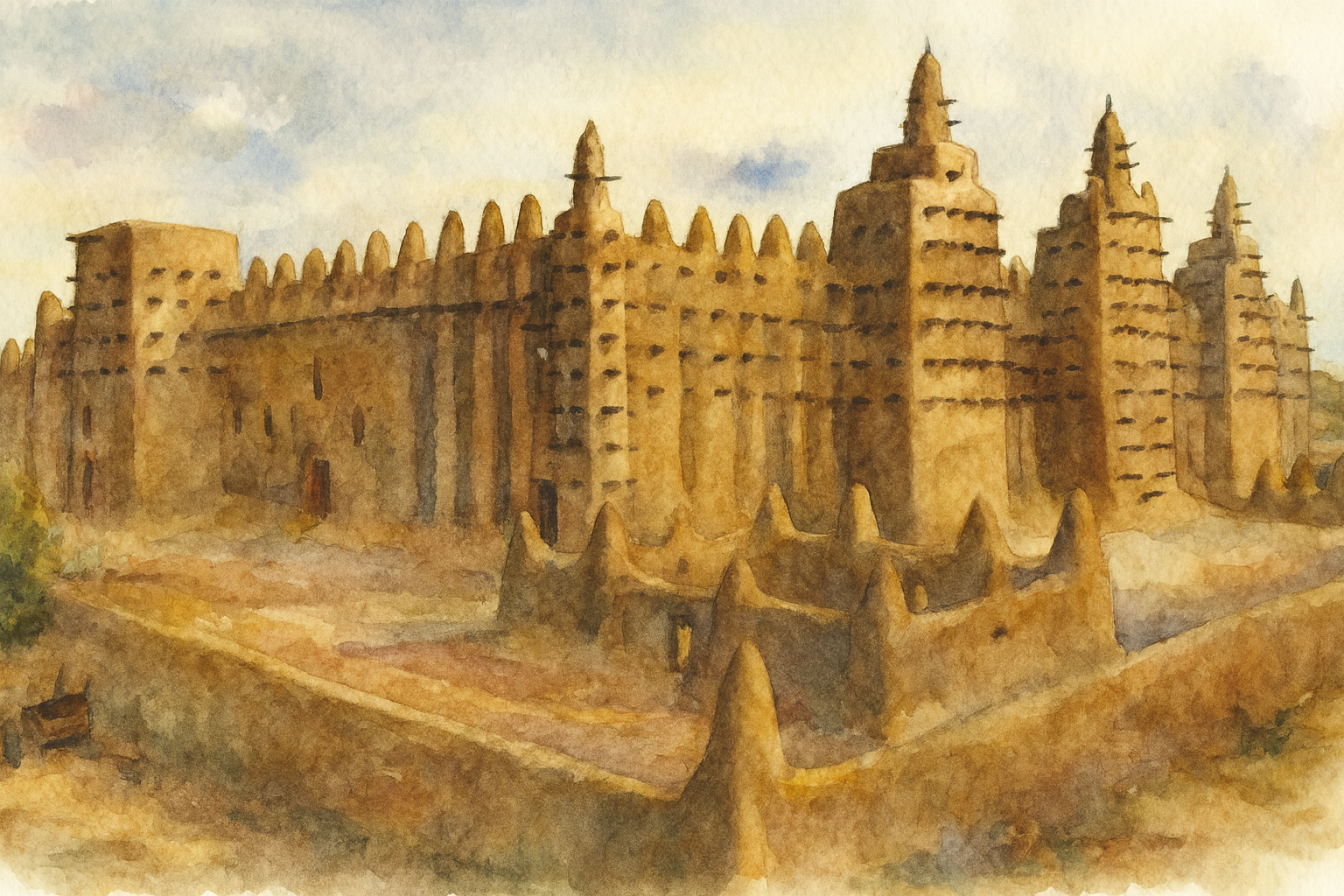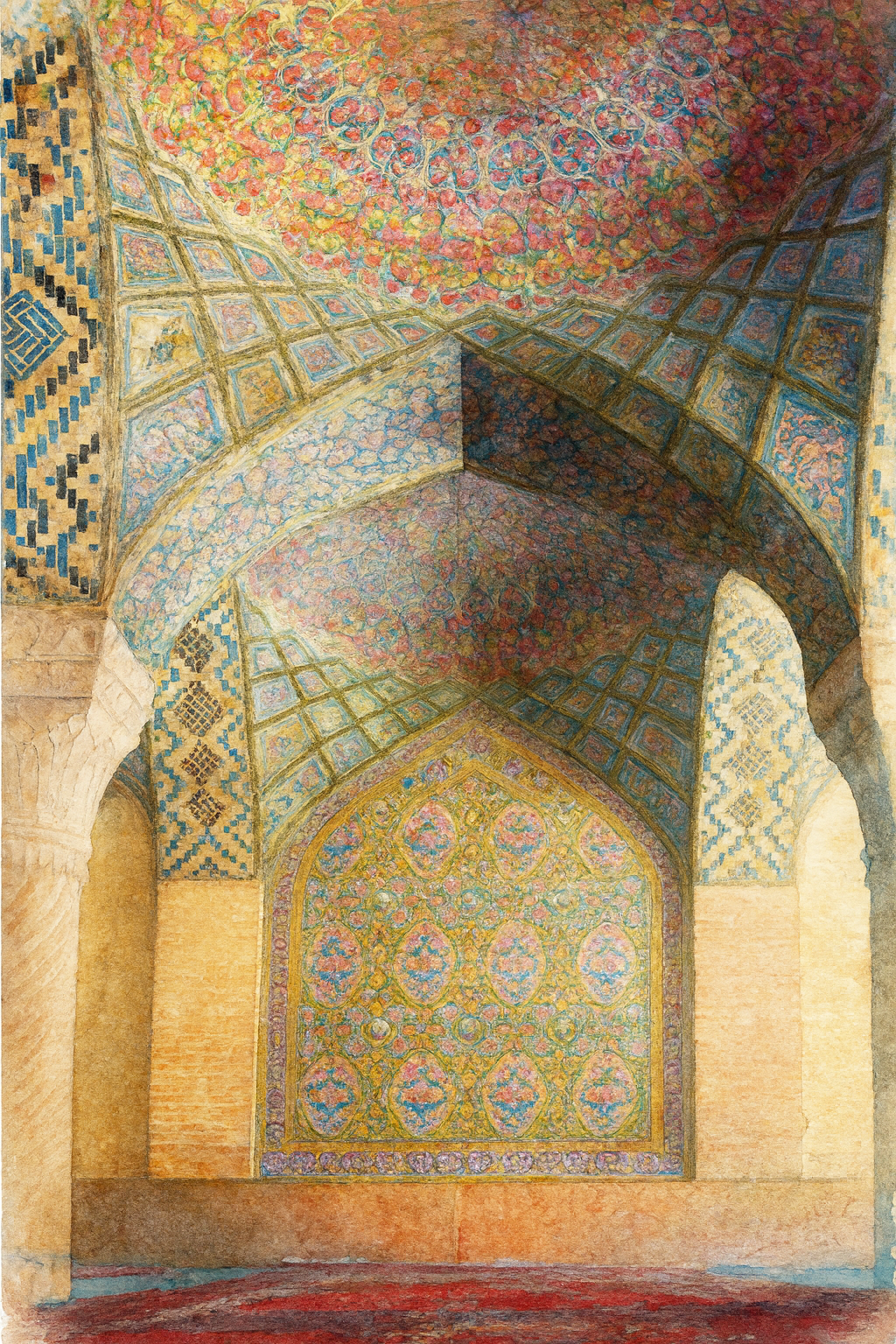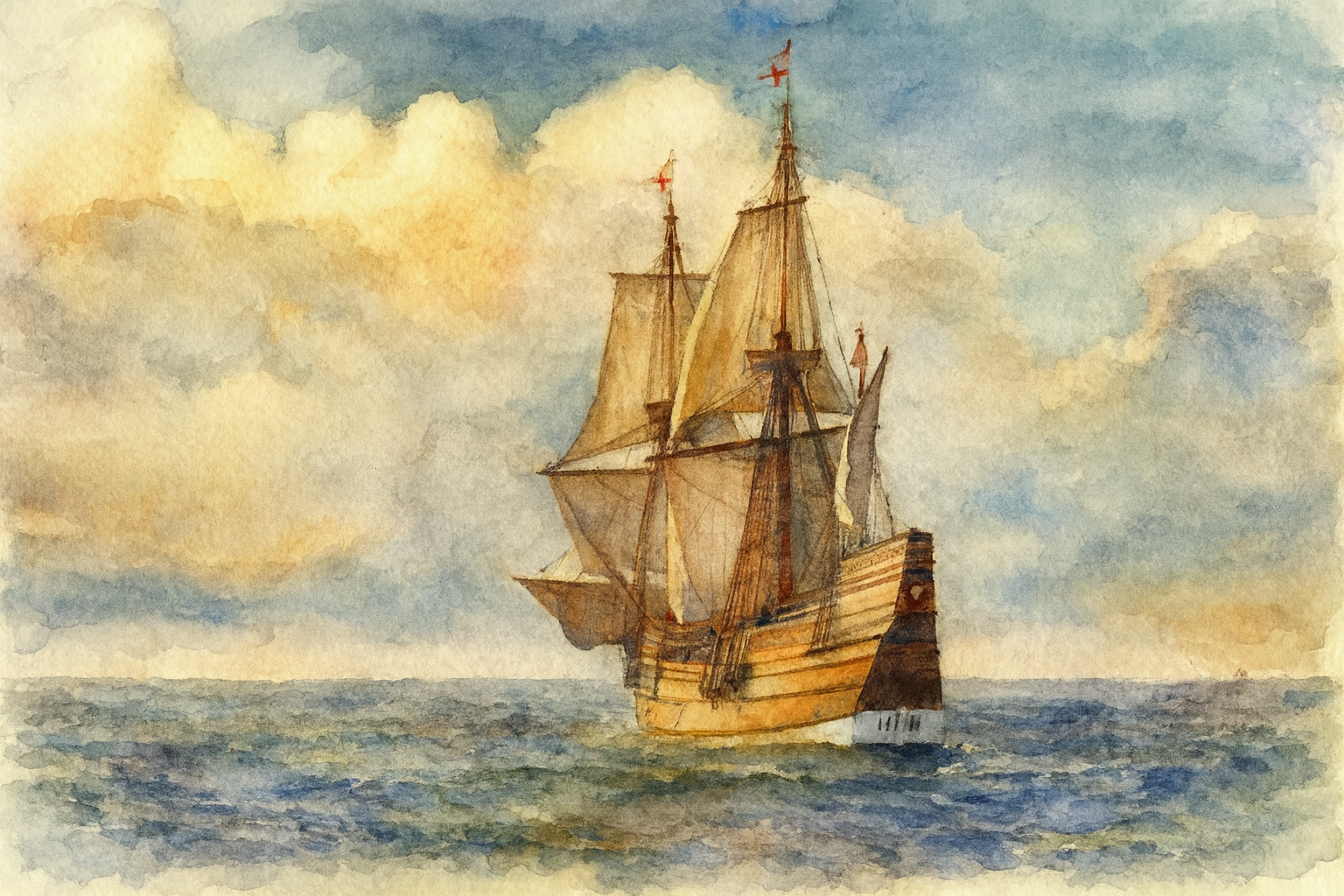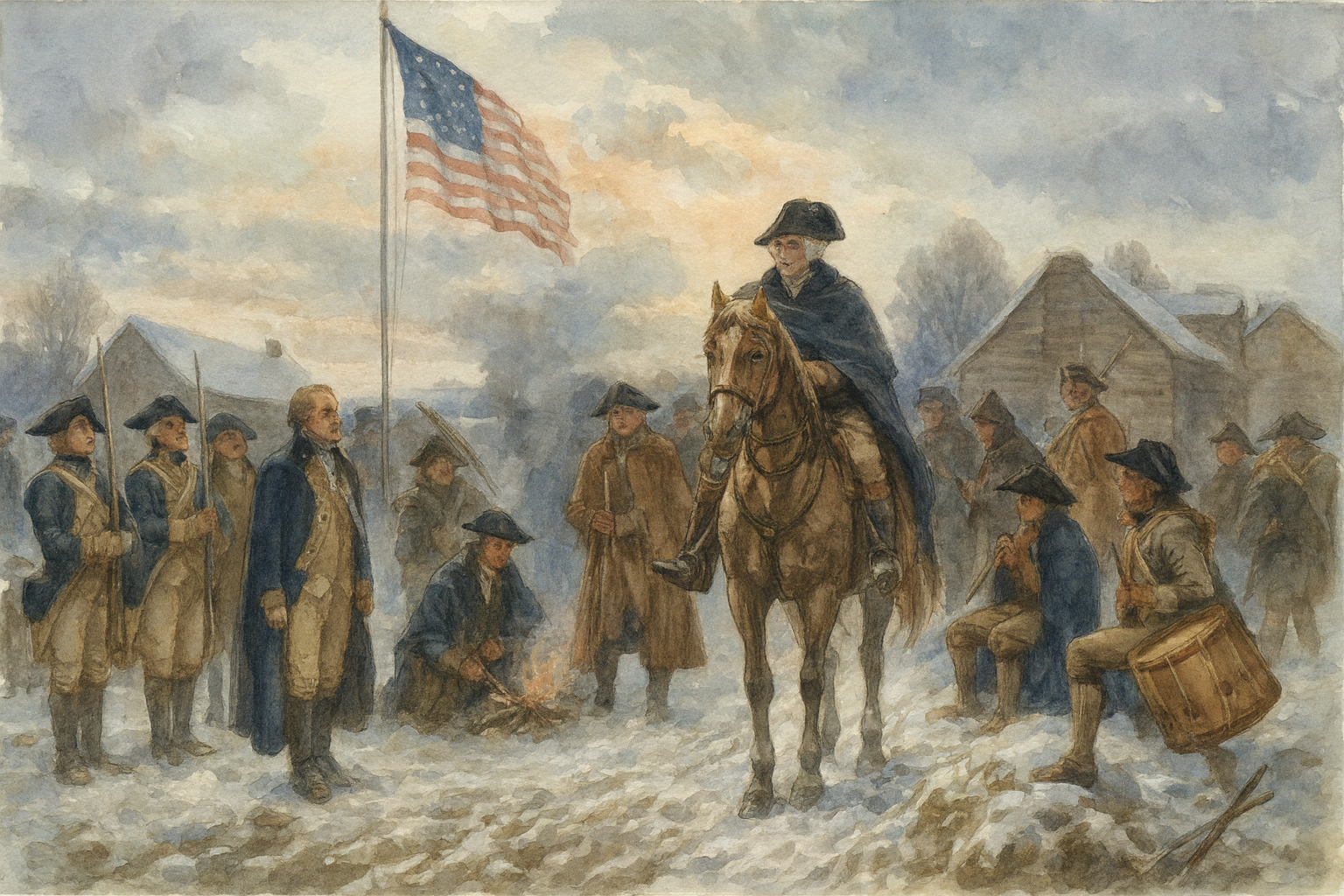
History
History
According to the Waldorf Pedagogy
In Waldorf: History is an unfolding of the human development of the soul. While this statement is is not rooted in the material sciences, the spirituality of this statement is the guiding force for the design and execution of the main lesson blocks for history. Understanding the underpinnings of Waldorf education and its basis in anthroposophy is especially strong in the history blocks, possibly more so than any other subject area. What is especially important for me is to understand the development of the child as a whole physical and spiritual being so that appropriate lessons may be offered to the student to support their natural unfolding in a holistic way minding their physical, emotional, mental and spiritual development.
History can be one of the most thrilling subjects to explore whether or not you do a Waldorf approach to your Homeschool. Some of the most fantastical stories are true! But what stories to tell and when to tell them depends on your educational approach.
The classical approach to history will cycle through historical periods every four years, each time reviewing and going in depth as a child matures.
The Waldorf approach to history is entirely based on the child’s emotional, intellectual, physical, and most importantly, spiritual development.
In Grade 1, the young child of seven years old steps into the world of learning. This is their first formal introduction to classroom and academic learning. At this age, the heart is still fully immersed in wonder, imagination, and whole picture thinking. Children are not ready for abstract thought, critical thinking or analytical, explanations.
At this age, history is not yet taught in a formal sense. Instead, it is taught through the rich world of fairytales, nature stories, and folk legends. The block that will later become history, begins with fairytales. This may seem strange as fairytales are not history; however, though they are not historical, they are still instructional. The Grade 1 student is fascinated by, and in need of strong, moral dichotomies: clear differences between right and wrong, good and bad, truth and falsehood. They have a deep sense of these moral values to begin with and need to see them represented in characters and storylines. Fairytales and legends are drawn from cultures around the world and are filled with archetypal images of good and evil, courage and kindness, transformation and redemption. These are all themes that the Grade 1 student needs for their development. This is in complete contrast to the grade 9 student for instance who is in need of characters and historical figures who tread the fine line between good and evil, exposing the gray area that most people live in. The Grade 9 student revisists dualism and contrast from the post puberty lense.
Through these stories, the Grade 1 student encounters moral truth and life patterns in an imaginative living way. These are the strongest lessons as they set up the moral foundation for the students for the future. If you’ve ever heard the old axiom, “everything I needed to know in life, I learned in kindergarten” then you’ll understand the importance of fairy tales in Grade 1.
By Grade 2, the eight year-old child begins to sense the complexities within human nature. Proverbs from fables and Saint stories are the next block to building the moral foundation for developing child. These stories provide a mirror for the children’s own internal growth. In the fables, animals portray human traits: cleverness, greed, loyalty, and foolishness. This is where we build the constructs of “the wise owl”, or “the loyal dog”, or “the clever fox“. Observing characteristics or qualities in animals is a theme repeated in many lessons. The qualities of numbers was explored in Grade 1. The qualities of colors is experience throughout the grades. And the quality of animals is explored beginning in Grade 2.
Later in the zoology block, the student will learn that the human being embodies all the traits and characteristics of the animal Kingdom whereas each animal possess a trait of the human.
In the legends of Saints and cultural heroes, students will see how these individuals modeled virtue, sacrifice and love. These abstract concepts are not understood in the absence of story showing human struggling with these virtues. Students are not yet ready for the complexities of human nature that the grade 9 student will explore and they still need to see the polarity of light versus shadow or love versus hate or righteousness versus evilness in the stories portrayed in Grade 2.
While some stories in Grade 1 and Grade 2 may seem grotesque or horrific, the Grade 1 and Grade 2 students do not envision the stories with an adult mature mind. Instead, they gather the moral lessons through the delivery of fairytales and fables. For sure there will be intellectualized students who may not tolerate these stories.
In Grade 3, the nine year-old child is at a turning point in his development. With a growing sense of self and a separation from the whole, the child of nine is going through the Nine-Year-Change. The Nine-Year-Change can be chaotic, disrupting, and anxiety inducing for the student. For this reason, the curriculum supports the development of the child by exploring the stories of Musa (Moses). These stories can be found in the three Abrahamic religions: Judaism, Christianity and Islam. While the Grade 3 student is going through the nine-year-change, the time when they are coming out of the innocence and eternity of childhood and the world of fantasy and imagination into a world governed by time and reality, the curriculum mirrors that transition with the stories of Moses and his people being lost in the desert for 40 years. The time of loss, uncertainty and an unsettled feeling is similar to the experience of the nine-year-old child. To relieve the anxiety of this time, the stories provide a reflection of these feelings. The curriculum supports this time with lessons and shelter building, farming, and clothing to give the child a sense of stability as she finds her place and purpose in the world.
In Grade 4, the 10 year-old child steps into greater individuality and strength with a “fall from paradise”. Now that the nine-year-change is over, the child settles himself in this world. Prior to this, the child experience time as eternity. The child also experienced fantasy and imagination as reality. The 10 year old child distinctly determines fantasy from reality and with that comes a sadness and a hope. The Grade 4 student learns about Norse mythology as it is the perfect mirror for the development of the 10-year-old. While there are other histories and stories that are suitable for this development, many choose to use the stories of Thor and Loki. The bold deeds of Thor and the cunning of Loki speak to the fourth graders’ inner awakening. The stories are dramatic and filled with conflict, mystery and fate. Yet, they are still grand and noble in spirit. They are otherworldly and in many ways are an exaggerated portrayal of cunning, mischief, strength, and betrayal. Alongside mythology, the student begins to learn about local geography and cultural stories of their homeland. This gives the student a sense of belonging, community and responsibility.
A Grade 5 student of 11 years old is at a turning point in the study of history. Grade 5, often brings a sense of balance and harmony to the child often referred to as “The Golden Age”of their development. The history blocks explore the ancient civilizations of India, Persia, Mesopotamia, Egypt, and Greece. These cultures are introduced through the myths, daily life, inventions and spiritual contributions. The final history main lesson block for the Grade 5 student is Ancient Greece, where students explore the beauty and grace of this ancient civilization through its democracy, philosophy and mythology. This provides an ideal reflection for the Grade 5 student as they strive to find their own truth, beauty and goodness in themselves and in the world.
The Grade 6 student of 12 years is embarking on the journey of adolescence and puberty. The Grade 6 student is seeking logic, structure, and justice as those are the things unfolding and their development as they approach puberty. Roman history and the middle ages are the focus for this year. Roman history exemplifies, democracy, might and law. Through its republic and empire students are exposed to order and governance. As Rome falls, students explore the rise of Christianity, the spread of Islam and the shaping of the medieval societies. While Europe was plunged into the Dark Ages, North Africa, Arabia, Asia and India, experienced a golden age as Islam spread throughout these lands. In studying Middle Ages in Europe, the romanticize stories of castles, nights, the feudal system, the cathedrals, and even the Crusades appeal to the 12-year-old student. Grade 6 history shows the rise and fall of civilizations, the spreading of ideas, and how humanity continues to evolve and develop.
The Grade 7 student of 13 years old is experiencing a time of awakening and questioning. With adolescence comes a keen sense of awareness and an awakening of the individual as the adolescent wrestles with ideals. The Renaissance, Reformation and the Age of Exploration provide fertile ground for this discovery. Students will study scientists, explores, and inventors such as Leonardo da Vinci, Galileo, Copernicus, Martin Luther, and Magellan. For those students wishing to have a broader focus, they may study notable figures from other parts of the world like Ibn Battuta, Ibn Sienna, Zheng He, and Mansa Musa. In an aim to move away from Eurocentric lessons, teachers and homeschoolers may wish to include more diverse main lesson blocks in these years. Biographies are especially important to the Grade 7 student as they are inspiring and deeply human. The Grade 7 student sees a complete representation of a human being in spirit and struggle. Whereas students needed a clear representation of good and evil in Grade 1 with fairytales, students in Grade 7, 8 and 9 will appreciate the complexities of human nature expressed in biographies and in novels. Seventh graders appreciate that the human spirit is capable of great change and discovery. History becomes a mirror in which they see their own emerging strength and potential. They will also see the consequences of moral dilemmas.
Finally, the Grade 8 student of 14 years stands on the threshold of adulthood. They are eager to take on the great movements of modern history. This includes the revolutions of America and France and that of the industrial revolution of the early 20th century. Each revolution shows how people reform and struggle. In some cases, the struggle is for freedom and in some cases the struggle is for a better life, or, a faster, more productive life, or a more efficient way of doing things. In Grade 8, we also encounter the lives of inventors, reformers, visionaries, and scientists who shaped the modern world. The themes of justice, innovation and personal responsibility have been growing since Grade 6. We see a continuation of these things as students rectify within themselves the concept of justice in a world in which justice isn’t always achieved. With Grade 8, an exploration of modern history, allow students to come face-to-face with events that did not happen centuries or millennia ago, but rather things that are still unfolding in a student’s life. They are old enough to communicate these ideas with members of the community who are generations older than they are. These conversations are empowering and enlightening as students recognize how history affects communities today and how the events that they are living in now will affect the future.
Ancient Civilizations
-

Ancient Mesopotamia
The ancient civilizations blocks for the Waldorf curriculum for year 5 is fairly extensive having continued from the previous year's exploration of Norse mythology, the civilizations of Akkad and Sumer and the study of the Buddha and the Jataka Tales. For year 5, the student will cover the ancient civilizations of India, Persia, Mesopotamia, Egypt and finally Greece. Greek history and ancient Roman history will also be covered in year 6.
-

Ancient Egypt
Curious about how to put together a unit study? Join me as I take you through my process for putting together a unit study for Ancient Egypt. Much of the process is the same for all my history units, and only varies slightly for other units. I use a Waldorf curriculum as a default curriculum but often stray from the curriculum and come up with my own lesson plans.
-
Ancient India
The Ancient Civilizations are taught in Waldorf schools in grade 5 when children are 10-12 years old. The ancient cultures are taught uniquely in a Waldorf setting as the main aspects of the lessons are concentrated on the beliefs of the people, their spiritual beliefs, their creation stories, and their divinely guides teachers on the earth plane. While I tend to add other books and resources to our main lesson blocks, these additional resources may take away from the approach or may add needed background information for the teacher or student to give context to the lessons.
-
Ancient Greece
We often do our History blocks in the winter as we tend to do a lot of reading and storytelling as part of our lessons. When doing our ancient civilizations, we tend to keep the history focused on traditions, culture, beliefs and biographies when possible. We also love our hands-on projects and activities so we tend to add as many as possible in the form of kits, crafts books and recipes.
-

Ancient Persia
Of all the ancient civilizations, Ancient Persia as been the tastiest. We often include cultural or historical recipes with our history blocks and this block began years ago when we started adding Persian cuisine to our recipes. In addition, for this unit, we added an assortment of living books and our Live Education Waldorf curriculum
-

Norse Mythology
In grade 4, the mythologies, folktales and epic poems are taught just at a time when the child is in turmoil between his inner and outer world. The fall of the divine and the journey of the human through life and its suffering is mirrored in the Norse myths the fall of Thor and the loss of his hammer. The creation story of Adam and Eve evoke the same sentiment.
-

Ancient China
Our Ancient China Main Lesson Block has been designed to appeal to multiple students of differing abilities, interests and grade levels. We love including our picture books in our main lesson blocks, but this is not typical in a Waldorf setting as lessons are delivered orally. If you wish, you may choose to use these resources to storytell or as resources to put together your lessons.
World History
-
Rome
Join me as I put together our Ancient Rome unit study.I like to cover three areas of learning when teaching history: Belief (religion or mythology) of the people, Culture or daily life, Historical events. I do this in the following ways: Historical fictions, Biographies/autobiographies, Hands-on activities, History books, Interactive projects, A book on Mythology or religion
-

The Middle Ages | Medieval Europe
I’ve collected a wide assortment of resources for this unit study on Medieval Times with a focus on Europe. While our Live Education Waldorf homeschool curriculum for grade 6 includes several lessons on this time period from other areas in the world, I’ve decided to split up this time period and focus this unit primarily on Europe followed by a unit I’m calling “The Silk Road” which will focus on other areas of the world.
-
The Silk Road
When we first embarked on our Silk Road main lesson block, we thought we would simply add a few resources to complement our Middle Ages unit. Three years later and this little unit has grown into several deeply engaging main lesson blocks that span over 1000 years of history and half the world from North Africa to China.
-
West Africa
Is it really Medieval if Africa was experiencing its Golden Age? It was an age of exploration, wealth, power and civilization. This unit study on Africa covers the time period of about the 900s to the 1400s, and focuses on the empires of Mali, Ghana and Songhai. While putting together our history unit studies and main lesson blocks, I like to look for books and resources for a rich experience. I add picture books, historical fiction, project books, cookbooks, folktales, biographies, and history books as well as projects and outings if possible.
-

The Great Khans of Mongolia | Kubla Khan, Genghis Khan, The Great Wall of China
It's not a history unit if you don't talk about the people. After all history is His Story right? Her story is mixed in there, but is rarely the focus. While I have not made an effort to explore female historical figures, I think we do ourselves, our education and our children a disservice when we don't include their stories.
-
Ibn Batutta
This unit study is on Ibn Battuta’s life. It’s a smaller unit study than what we normally do and accompanies our larger Silk Road unit study which has grown over the years to included several smaller units on the time period of about 600s to 1500 and spanning the areas from North and West Africa, to Arabia and Asia. When we do our history units, we love to include biographies, projects and recipes. Each region has much to offer in the way of exploring the food that’s either historical or regional.
-
Golden Age of Islam
Are you curious what was going on in the rest of world while Europe was deep in the Dark Ages? While it's considered the Middle Ages or Medieval Times in Europe, other parts of the world had been civilized and had been flourishing for centuries, even millinias. Let's explore other parts of the world together. I have a series of Main Lesson Blocks and Unit Studies that explore North Africa and Ibn Battuta, West Africa and Mansa Musa, Mongolia and Genghis Khan, Ancient China, China and Kublai Khan, The Silk Road and Marco Polo and the Muslim world of Arabia, Persia and the Ottoman Empire with notable historical figures such as Ibn Haytham, Ibn Sina, Khalid ibn al Walid, Saladin and more.
-

Marco Polo Unit Study
As we explored historical events and notable figures, we were whisked away into histories that deserved their own units rather than afterthoughts to a larger Middle Ages unit. As a result, we now have an African main lesson block which focuses on the empires of Mali, Ghana and Songhai, the king Mansa Musa and the time period of about the 900s to the 1400s. We also did a unit on Ibn Battuta, Marco Polo and the Great Khans of Mongolia.
US History
-
Age of Discovery
In a Waldorf setting, the Age of Discovery is presented in Grade 7 along with the Age of Exploration, Renaissance Biographies, Reformation Biographies, and European Geography. The Age of Discovery covers the explorers, such as Christopher Columbus, Vasco de Gama, Ferdinand Magellan, and the Hernan Cortez and Francisco Pizarro (who conquered parts of central and South America)
-
Colonial Times
The Colonial Times along with the American Revolution and Civil War are covered in the US history block for grade 8, while Western Expansion is taught in a local history block in Grade 5. However, I brought this unit to elementary school as a unit study rather than a Waldorf inspired main lesson block.
-
Revolution
Our American Revolution Unit Study was completed a few times with unique projects each time. While some books (especially picture books) may be used again when a unit comes around again, often I collect some fresh books to inspire all of us. This unit was small and was a companion to the Colonial Times unit. Many of the projects may be used with either unit.
-
Civil War
Upon entering adolescence, the Grade 8 student has a desire for stronger critical thinking and refined moral capacities. The ability to engage in critical thinking is a milestone marker of puberty. The Civil War provides a rich opportunity for student to discuss, examine conflict, freedom, justice, and human rights. By this age, students can understand social upheaval and national transformation.
-

Western Expansion & Lewis & Clark
When I started planning our American History units, I quickly found myself overwhelmed by the sheer volume of materials available. Everything looked to inviting and inspiring and I did something I do often, I overbought and over planned. Then I had to read our way out of the massive pile of books I had purchased! We did…slowly and over years.
-
California History
California history including the gold rush make up this unit. It's a mix of biographies, historical fiction, resource books, kits and a 'how to draw' book. I think I'm most looking forward to the kit we got for panning for gold. We also really like the 'Who Was..." books for their simplicity, content and illustrations. No unit of mine would be complete without a hands-on activity and this unit includes a 'gold' excavation kit.
-
Alaska Unit Study
Our exploration of Alaska came about because my sister, Samiah and her family, moved up to Alaska in the fall of 2020. Once there, she was diagnosed with a brain tumor and after surgery, it was discovered that it was an aggressive and fast growing brain cancer. As a family, we decided to visit her after she recovered from brain surgery but before she began her cancer treatment which included chemotherapy and radiation.
-
US Geography
Ever learned the fifty states and capitals only to forget them? Try adding some games like Fast Track States and Capitals or, my favorite 10 Days Across the USA. If songs are your thing, you can try the states and capitals CD by Audio Memory. These catchy tunes will get you memorizing the states and capitals in no time!
